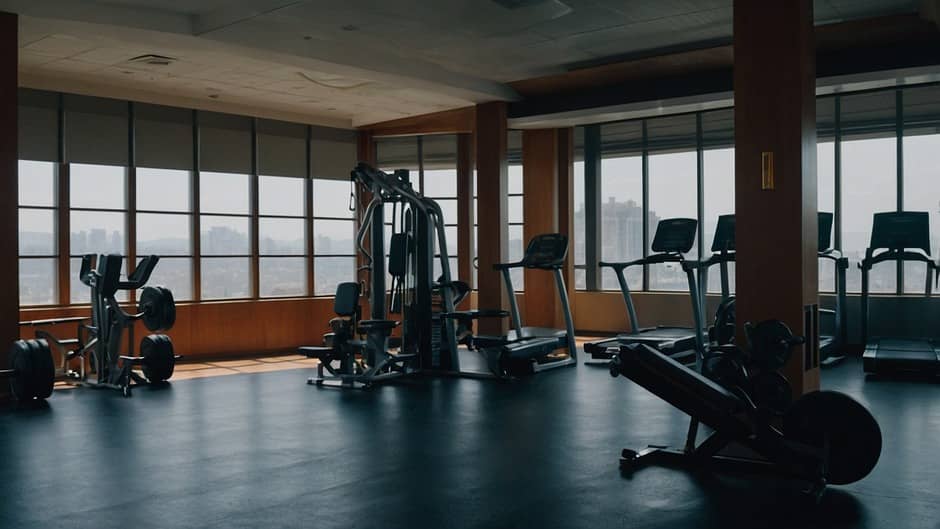Table of Contents
- Why Warm Up?
- How Does It Work?
- What Happens If You Skip It?
- What Should a Good Warm-Up Include?
- How to Avoid Injuries at the Gym?
- How to Avoid Injuries in Football?
- Ways to Avoid Injuries in Sports
- How to Avoid Injury in Running?
Why Warm Up?
Warming up primarily gets your body ready for the activities that lies ahead.
Think of your muscles as elastic bands.
If you try to stretch a cold rubber band, it can break or not stretch as much. But if you warm it up first, it will stretch more readily and safely. That is exactly what your muscles achieve when they are heated up.
It increases their ability to adjust and decreases their risk of injury.
Let’s see how to maintain a physical health?
How Does It Work?
When your body reaches a warm temperature, you begin to engage in some mild exercises that cause your heart rate to increase somewhat.
This helps your muscles become more flexible and less prone to strain by raising their temperature.
Think of it like preparing your body for maximum speed before accelerating. Heating up also helps you focus mentally. Your brain is just as important as your physical health. Warming up is the stage where your mind prepares for the workout that lies ahead.
As a result, you’ll be able to concentrate better and perform better.
What Happens If You Skip It?
One can get injured if they neglect to warm up.
Your muscles are more prone to injury when you lack it because they are less flexible and more taut. You may also feel stiff, which might impair your performance and range of motion.
Additionally, failing to warm up may indicate that your body isn’t entirely prepared for the demands of action.
What Should a Good Warm-Up Include?
A good warm-up usually starts with a little bit of intense exercise.
This could be walking quickly, jogging at a slow pace, or even exercising with a rope.
After that, you should perform some unusual stretches. These stretches, which call for movement while stretching, include arm circles and leg swings. This type of stretching opens up your joints and prepares your muscles for action.
Also Read – How To Do The Preacher Curl For Building Bigger Biceps? – Best Way To Build Bigger Biceps (2024)
How to Avoid Injuries at the Gym?
Hi to all of you! We ought to talk about staying safe when exercising at the gym today.
While it’s wonderful to challenge yourself and have physical objectives, we must take care to avoid self-harm. The following is a polite reminder to keep you safe:
- Think of preheating your car like a quick run before a long trip. Start with some dynamic stretches and work your way up to some light cardio, such as jumping jacks or running. Your muscles receive more blood as a result, which gets them ready for the next session.
- It’s tempting to carry heavy loads or exert yourself without thinking about your form, but that’s a surefire way to injure yourself. If you are unclear of the proper technique, seek guidance from a trainer or view videos on the internet. A proper structure lessens the strain on your joints and ensures that you’re working the appropriate muscles.
- Avoid starting at zero and ending at sixty in each workout. Gradually increase the intensity of your workouts by starting with smaller weights or shorter sessions. This allows your body to adjust and fortify itself without endangering you.
- Stop if you experience severe pain or unease. After an activity, it’s normal to feel sore. However, if the pain persists or gets worse, it’s best to rest and, if need, seek professional advice.
- Make sure you stay hydrated before, during, and after your workout. Don’t undervalue the importance of getting enough sleep. Your muscles need time to heal, so make sure you get adequate sleep and take rest days.

How to Avoid Injuries in Football?
Football is a physically difficult activity, but it’s also quite exhilarating.
The following is how to stay in the game without being eliminated:
- Wear your cushions, mouthguard, and headgear all the time. Wear these items of equipment; they are meant to protect you against injuries.
- A strong core aids in maintaining your body’s alignment and guards against injuries. Include exercises such as boards and extensions in your center fortitude development regimen.
- Using the right handling techniques can help prevent wounds. Always use your shoulder to make connections, hold your head high, and avoid taking the lead with your protective cap.
- Your muscles, tendons, and ligaments can better withstand the demands of the game with normal shaping. Focusing on agility exercises, strength training, and flexibility is beneficial.
- Because football is an intense sport, it’s critical to drink enough of water and take breaks as needed. This helps you avoid overheating and maintains you operating at peak efficiency.
Ways to Avoid Injuries in Sports
Whether you play basketball, soccer, or any other sport, you may prevent injury by following these tips:
- Similar to the rec center, heating up and unwinding are essential. Warming up prepares your muscles for movement, and cooling down aids in healing.
- Each sport has its own set of rules and techniques. By using these talents correctly, injuries can be prevented. In b-ball, for example, proper landing and hopping techniques reduce kneeling weight.
- Muscle and joint strength can be increased through regular strength training and stretching. Focus on workouts that work the muscles unique to your sport.
- Allowing your body to rest and recuperate is crucial. Excessive training might cause weakness and increase your vulnerability to injuries. Balance your training with days of relaxation.
- Make sure everything fits properly and is in excellent condition. Wearing shoes that fit properly can help reduce foot and ankle injuries, for example, in activities like soccer.
Also Read – What Happens If You Do Too Much Exercise? (2024)
How to Avoid Injury in Running?
Although running is a terrific way to stay in shape, it can also lead to injuries if we’re not careful. This is how to maintain your charming and injury-free runs:
- Invest in a good fitting, supportive pair of running shoes. Make sure your shoes fit your running style and terrain because they are your most important piece of injury insurance.
- Whenever feasible, choose to run on grass, trails, or other softer terrain as opposed to hard tarmac. Soft surfaces have less of an effect on your joints.
- Increase your mileage and effort gradually. Sudden increases in distance or pace can cause your body to bear too much weight.
- For your daily running exercise, keep in mind to take rest days and pay attention to your body. In the unlikely event that you experience agony, take some time off and let your body heal.
- Supporting your running and preventing injuries can be achieved by strengthening your legs, hips, and core. Core workouts such as lunges, pushups, and squats are excellent for runners.
Read us on Medium.




